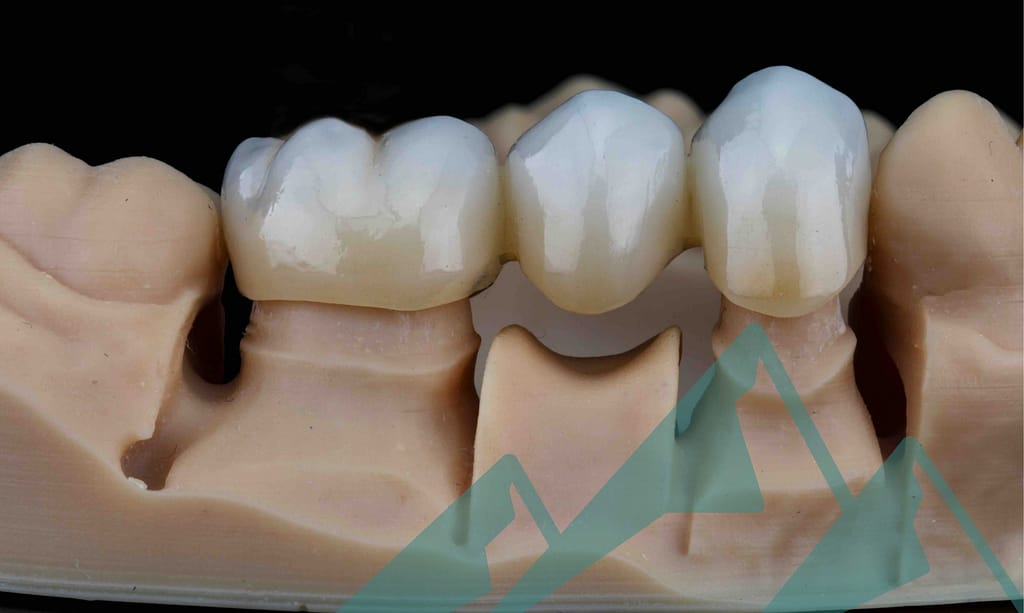Dental Bridges Explained: 5 Important Things You Should Know

Bridging the Gap in Your Smile
Missing teeth are a common issue many people face, but the good news is that modern restorative dentistry offers a variety of effective replacement solutions. Whether due to an accident, decay, or another dental issue, missing teeth can impact your appearance and overall oral health. Replacing missing teeth is crucial for maintaining a healthy mouth and a full, confident smile.
Dental bridges are one of the most popular and effective restorative options available today. This innovative solution can restore your smile and help you regain your confidence. But what exactly is a dental bridge, and how can it benefit you? Keep reading to discover the top five essential things you need to know about dental bridges and how they can transform your dental health!
1. Dental bridges fill the gaps with a pontic attached to anchor teeth.
A dental bridge is a fantastic solution designed to fill gaps caused by one or more missing teeth, restoring both function and appearance to your smile.
This innovative dental restoration consists of a pontic (false tooth) perfectly filling the gap left by missing tooth/teeth. The pontic is securely anchored in place by abutments, which are the natural teeth, sometimes protected with dental crowns, or dental implants on either side of the gap. These supporting teeth provide the stability needed for the bridge, ensuring a robust and long-lasting solution.
2. There are four common types of dental bridges.
Dental bridges come in various types, each tailored to meet specific needs and conditions.
- Traditional bridge: This is the most widely used type and involves creating a pontic anchored by crowns on the adjacent teeth. They are ideal when you have healthy teeth on both sides of the gap.
- Cantilever bridge: This type is similar to a traditional bridge but is anchored by a crown on only one side. It’s often used when there are no teeth on one side of the gap.
- Maryland bridge: Also known as resin-bonded bridges, these use a metal or porcelain framework bonded to the back of adjacent teeth. They are typically used for missing front teeth, as they require minimal alteration to the surrounding teeth.
- Implant-supported bridge: These are anchored by dental implants rather than natural teeth. This type is especially useful when multiple teeth are missing, providing a strong and stable foundation.
Choosing the right type of dental bridge depends on the location of the gap and the condition of your adjacent teeth, ensuring a perfect fit for your unique dental needs.
3. Dental bridges offer many benefits, both aesthetic and functional.
Dental bridges provide a range of benefits that go beyond merely filling gaps. Functionally, they restore your ability to chew and speak properly, making everyday activities much more comfortable. Dental bridges also prevent the remaining teeth from shifting out of position, which helps maintain the alignment and overall health of your mouth.
Aesthetically, dental bridges can significantly enhance the appearance of your smile. They blend seamlessly with your natural teeth, giving you a complete and confident smile. By choosing a dental bridge, you’re not only improving your oral health but also boosting your self-esteem with a restored, beautiful smile.
4. There are some candidacy factors to consider before proceeding.
Before getting a dental bridge, several factors need to be considered to ensure it’s the right solution for you. One of the primary considerations is the health of the adjacent teeth, as they need to be strong enough to support the bridge. If these teeth are not healthy, other treatments may be necessary before a bridge can be placed.
It’s also important to think about the cost of the dental bridge, as prices can vary depending on the type and materials used, though they tend to be one of the most affordable options. Lastly, with good care, a dental bridge can last from 5 to 15 years, but you should be aware that a replacement may eventually be needed.
5. Dental bridges require some special care to keep them lasting.
Proper care is essential to ensure the longevity of your dental bridge.
Regular cleaning, including brushing twice a day and flossing, helps to prevent plaque buildup around the bridge and supporting teeth. You’ll need to clean around your bridge, including the anchor teeth, thoroughly. It’s also crucial to attend dental checkups regularly, so your dentist can monitor the condition of your bridge and overall oral health.
Additionally, avoiding certain foods that are particularly hard or sticky can prevent damage to the bridge, ensuring it remains a durable and effective solution for as long as possible.
Book a dental bridge consultation with Stephen J. Spencer, DDS today.
If you’re considering a dental bridge to restore your smile and improve your oral health, there’s no better time to take the next step.
Consulting with a knowledgeable and experienced dentist is essential to determine if a dental bridge is the right option for you. Dr. Stephen J. Spencer, a trusted dentist in Great Falls, Montana, offers comprehensive consultations to help you explore all your tooth loss solutions. Whether a dental bridge is ideal for you or another option suits your needs better, Dr. Spencer will guide you every step of the way.
Don’t wait to achieve the confident, healthy smile you deserve. Schedule an appointment with Dr. Spencer today and start your journey to optimal dental health!